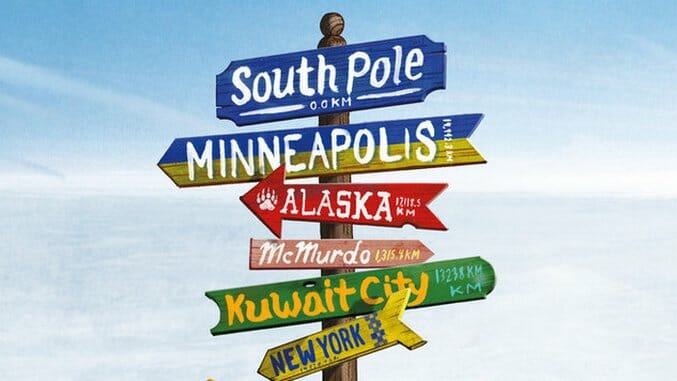In Ashley Shelby’s South Pole Station, a Climate Change Denier Rocks Antarctica’s Research Community

Antarctica is a place of extremes: coldest place on earth; home of the world’s largest desert; land of constant sun and constant night. So it stands to reason that Antarctica draws only the most intrepid and unique individuals.
While the continent has no permanent population, numerous scientists and support staff are scattered across its surface. It is here, by design, that Antarctica is meant to avoid at least one polarizing factor: politics. Operated under the Antarctic Treaty System, the South Pole is meant to be a brumal Eden of science, where research centers are freed from the political binds that exist in the world above.
This is not always the case.
Set during the second Bush administration, Ashley Shelby’s South Pole Station finds the rising tide of neoconservatism landing on the Southern Sea’s shores. Shelby’s band of Polies, stationed inland at the titular Amundsen-Scott South Pole Station, find their delicate ecosystem unnerved by the placement of a climate change denier at the most crucial climatology site on the planet. This unwelcome political intrusion knocks their axis adrift, and it just so happens to be painter Cooper Gosling’s luck that this happens on her first trip to the ice.
 The daughter of an Antarctic enthusiast, Cooper was the type of kid who would play Terra Nova Expedition with her brother, always the observant—and surviving—Cherry while he was the noble Titus, who wandered shoeless into a blizzard in an attempt to sacrifice himself. Cooper begins to falter as an adult after her brother’s suicide. But through a twist of fate and some psychological evaluations, she finally visits the site of her and her brother’s dreams on an arts grant.
The daughter of an Antarctic enthusiast, Cooper was the type of kid who would play Terra Nova Expedition with her brother, always the observant—and surviving—Cherry while he was the noble Titus, who wandered shoeless into a blizzard in an attempt to sacrifice himself. Cooper begins to falter as an adult after her brother’s suicide. But through a twist of fate and some psychological evaluations, she finally visits the site of her and her brother’s dreams on an arts grant.
Cooper find herself thrust into an unusual and cloistered world, somewhere between the science complex on campus and Devil’s Island. As she struggles with creative despair and the wake of her brother’s death, the station attempts to rectify climate change denier Frank Pavano’s posting. In this cauldron of instability, which so neatly echoes the universe-spanning physics research being conducted nearby, Shelby’s characters bounce, vibrate and vibe.
An eclectic dramatis personae mans South Pole, and Shelby mines this singular society. Beakers and Nailheads—scientists and support/construction crews—constantly battle for supremacy, while ice spouses flourish in the stressful and separate climes. Considering the cliques, catechisms and constant social maneuvering, South Pole feels like the world’s most extreme high school.
Their reasons for journeying to the bottom of the earth are outlined in character-focused chapters and fleshed out in the chronologically splintered narrative. All are there because they have no place else to go. Nailhead Bozer feels no more at home than on the ice; scientist Sal needs the place for his work; Cooper’s various fellow artists seek inspiration; sociologist Denise has found a place of intense research interest. For their part, Cooper, Pavano and station manager Tucker—the only black and gay man on the continent—all share something in common. All were child prodigies, who found fame too soon and have fled from the ghosts of their unfulfilled potential.
Comedic in tone, it’s unfortunately in the funny scenes that South Pole Station falters. Clipped exchanges read as ragged, not repartee, and many of the thrusts, especially Cooper’s, just miss the mark. One is reminded not of fencing in these exchanges, but bad tennis. Fortunately, the South Pole is the perfect setting for black comedy, and a few dazzling set pieces—especially the feverish aftermath of a gruesome injury—astound with the dissociative radiance of Damascene snow blindness.
Paradoxically for her extreme setting—both Antarctica and the early 2000s political climate—Shelby’s prose is at its best when it abandons attempts at laughs or scientific soapboxing and instead wanders into the South Pole’s unmatched liminality.
B. David Zarley is a freelance journalist, essayis, and book/art critic based in Chicago. A former book critic for The Myrtle Beach Sun News, his work can be seen in Hazlitt, Sports Illustrated, The Chicago Reader, VICE Sports, The Creators Project, Sports on Earth and New American Paintings, among numerous other publications. You can find him on Twitter or at his website.